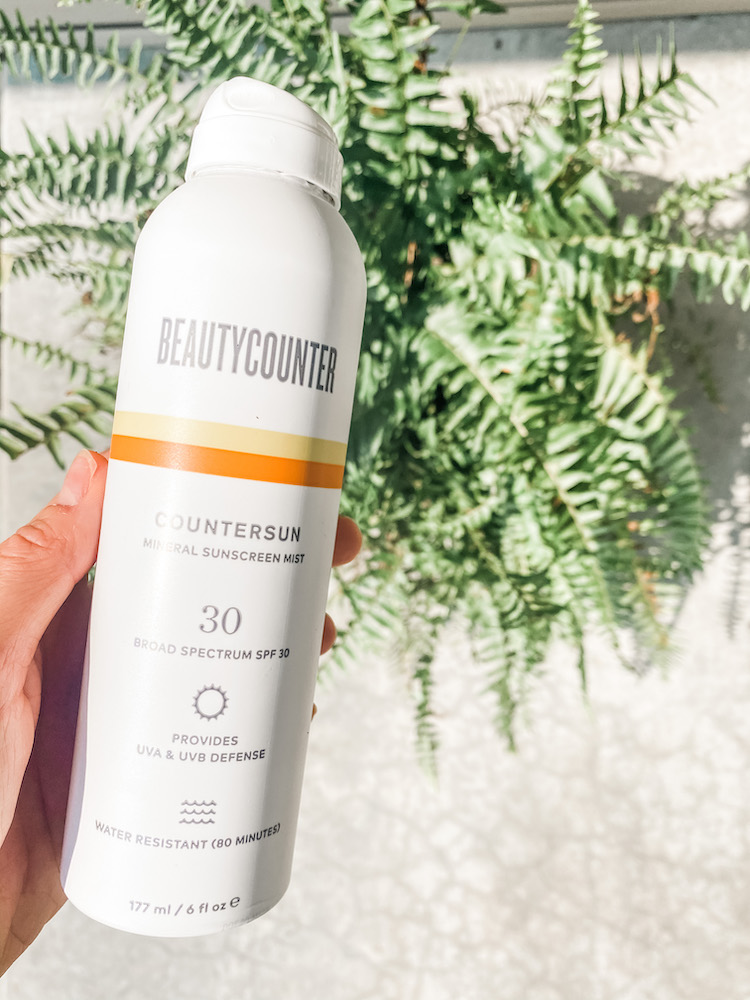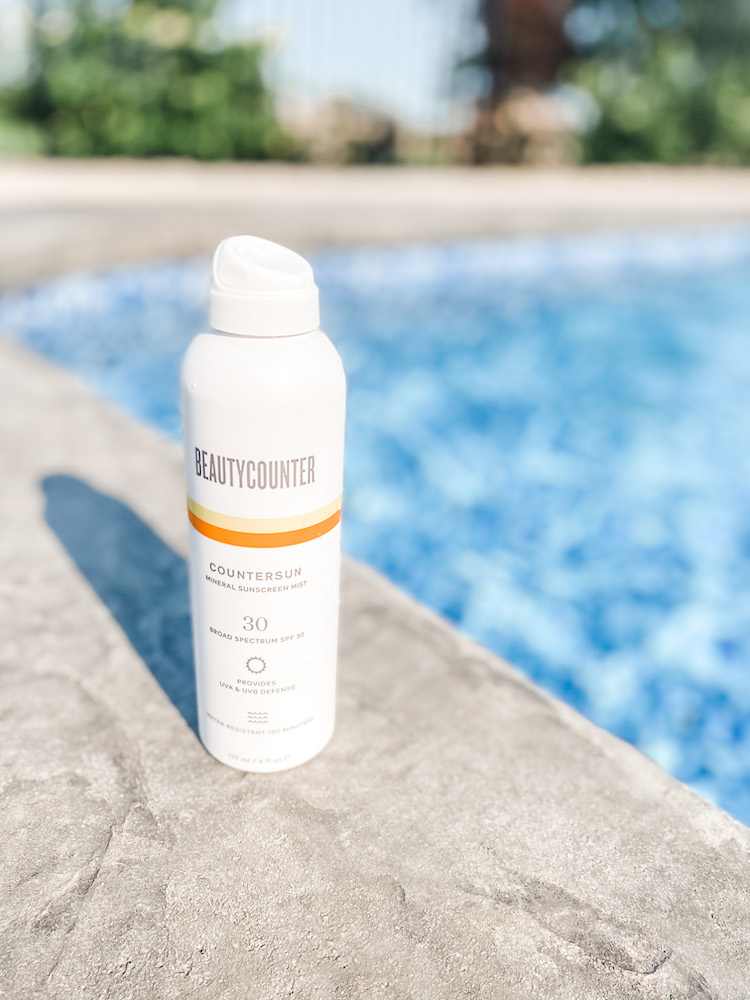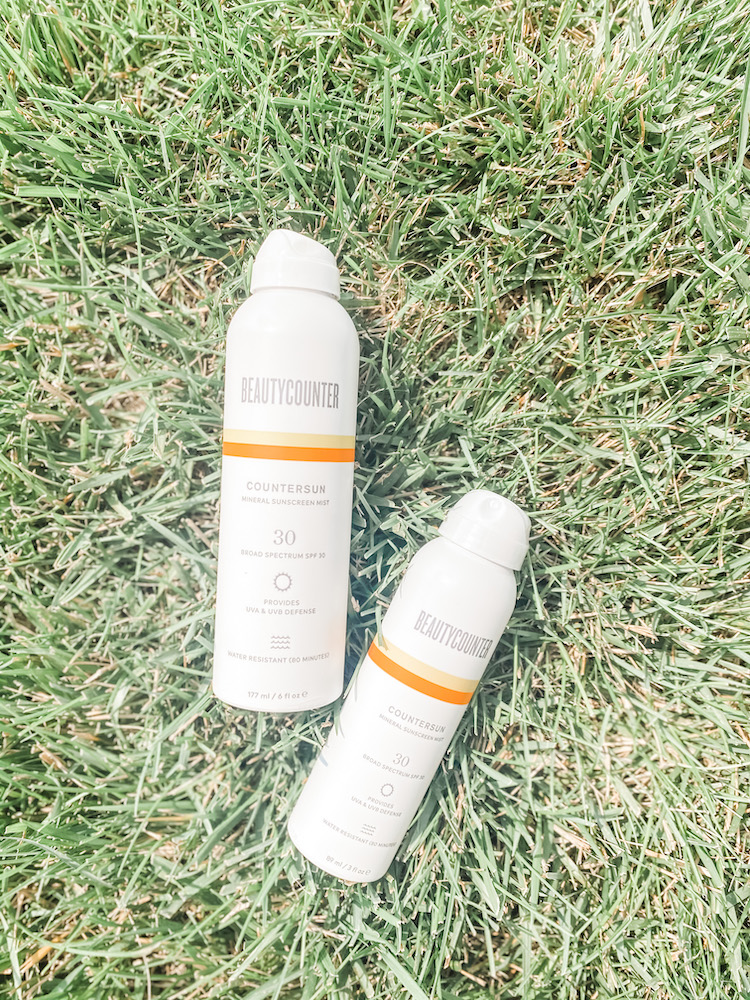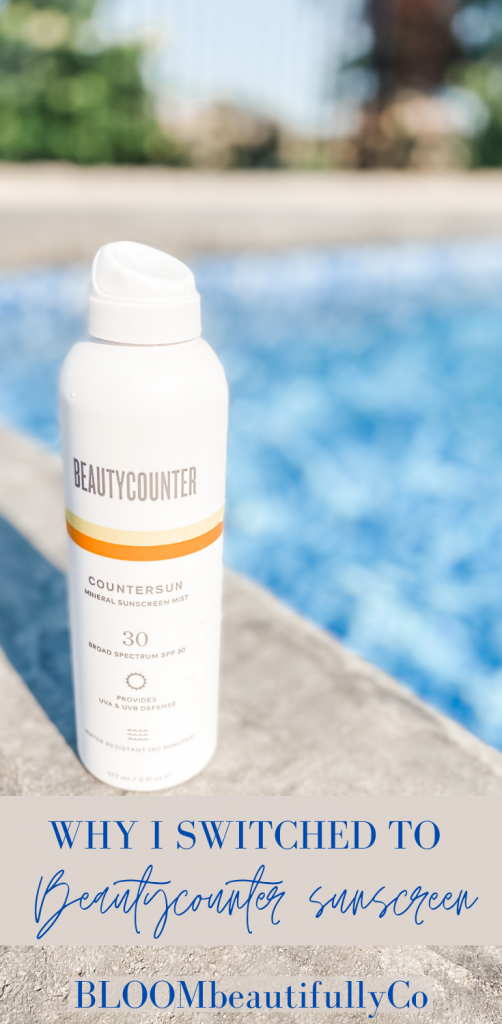I am sharing 3 reasons why I switched to Beautycounter sunscreen. Sunscreen is applied to protect your skin, which is why I wanted to make sure my sunscreen was actually doing that.

This page contains affiliate links, which means we may make a small commission at no cost to you. Read our full disclosure here.
I am all about getting some good Vitamin D directly from the sun. However, some days we are outside longer than the recommended 15 minutes, so it can help to put on something to protect your skin from UVA and UVB rays.
I first try to stay in the shade, wear hats/clothes, etc, but sometimes sunscreen is needed. I mean I love my pool and beach days when I get them.
Although sunscreen aims to protect our skin, there has been some controversy on whether it can actually harm our bodies, too. Because if this, it’s important to dive a little deeper into your sunscreen’s ingredients.
How Is Beautycounter Sunscreen Different?
Beautycounter’s Countersun is a mineral based sunscreen that uses non-nano zinc oxide.
Mineral based sunscreen’s are different because the minerals act as reflectors directly on top of the skin.
Chemical sunscreens, on the other hand, absorb into your skin. When they do this, they create a chemical reaction with the sun’s rays, and release them as heat.

3 Reasons Why I Switched to Beautycounter Sunscreen
1. Safer Ingredients
Countersun is a non toxic mineral sunscreen that uses safer, clean ingredients. It uses non-nano zinc oxide, which is a mineral used to protect skin against the suns harmful effects.
I have learned that it’s been over 83 years since the last major federal bill governing beauty products was passed in the US; so, while a lot of ingredients haven’t been banned (yet!), zinc oxide is one of 2 ingredients that has been recognized as safe by the FDA for sunscreen.
I know there are so many ingredients out there, it is hard to know what each of them actually is. Here are a few ingredients that can be found in traditional chemical sunscreens:
- BENZENE: Found in cigarette smoke.
- OXYBENZONE: Hormone disruption. Organ System toxicity. Toxic to coral reefs.
- OCTINOXIATE: Hormone disruption. Reproductive toxicity. Toxic to coral reefs.
- HOMOSALATE: Hormone disruption. Enhanced absorption of pesticides.
- NANOPARTICLES: Not enough testing to prove safety for humans or the environment.
(reference: www.madesafe.org)
2. Easy On The Skin
With no chemicals and non toxic ingredients, this mineral sunscreen is a good option for all skin types, including sensitive skin. It is gentle and can have a soothing feeling on the skin.
3. Eco- Friendly
Countersun uses non-nano zinc oxide making it safe for the environment and reef friendly.
Non-nano means that the minerals will not be broken down into super tiny particles. Therefore, they can’t absorb into the skin.

Spray vs. Lotion
If this was solely based off convenience, I would definitely vote spray. It is my first choice for ease of application.
However, safety wise, lotion is going to better than spray. With spray, there is always the possibility that when you spray, you can inhale what is being sprayed into the air.
I can tell that Countersun is at least aerosol free, and powered with just air. Aerosols can contain toxic chemicals, which make them even worse to inhale.
Beautycounter Sunscreen
Shop Countersun, a safer sunscreen, and other clean beauty with me here.
Bloom Beautifully
We are always thankful for you stopping by, and we hope you enjoyed this post. Keep continuing to Bloombeautifully!
Pin This Info For Later

Leave a Reply